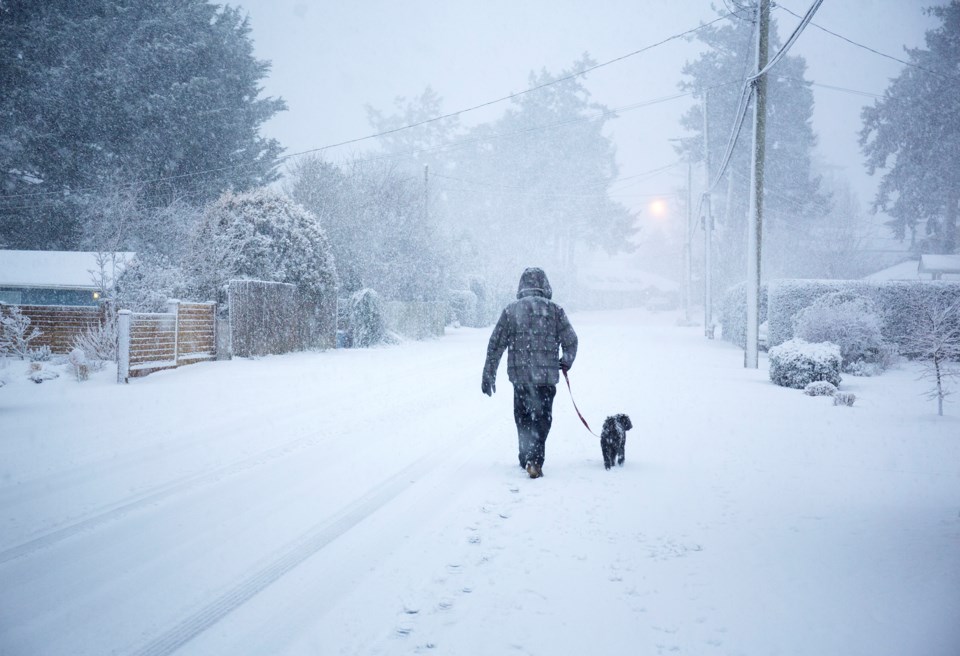It could be more than the frigid temperatures that is bothering your pet during this extended cold snap in Metro Vancouver.
The City of Delta Community Animal Shelter (DCAS) recommends paws being thoroughly cleaned even when returning from the shortest of walks.
“It’s one of those things if your dog doesn’t want to go out, then don’t force them to go out,” said DCSA manager Ryan Voutilainen. “When they do go out, it’s making sure you are watching for sand, salt and that sort of thing that can get in between your dogs’ pads and can actually dry them out.
“Dogs will also try and clean themselves and lick that off and ingest it, that sort of thing. It’s one of the most important things when you bring your animal back inside.”
Even when the snow and ice eventually melts, Voutilainen says there can be additional concerns.
“Watch for bodies of unfrozen water as well and make sure they are not drinking it,” he continued. “Dogs tend to enjoy getting into puddles and they can have hidden dangers in them whether it’s salt or even anti-freeze. It can actually be somewhat attractive to certain animals. A mere tablespoon of anti-freeze can kill a small dog or a cat.”
As for how much your pet can tolerate the cold conditions, owners just need to be aware it’s different for every animal, whether it be age or breed.
“If you have a dog with a shorter coat then it might be important to put on a jacket to support them when they are outside. Older, young dogs or ones that have medical conditions may be greater risk of exposure as well,” Voutilainen said. “Seeing your dog shivering or having lack of coordination may be signs of hypothermia and you will want to get your dog inside and possibly speak to your veterinarian.
“It’s important to limit the time outside. It maybe not the time for that two-hour walk. And those animals that do spent a lot of time outside, they may find the engine block area of your car as an escape from the cold. Thump on the hood of car before you start driving to give the animal an opportunity to get out.”


